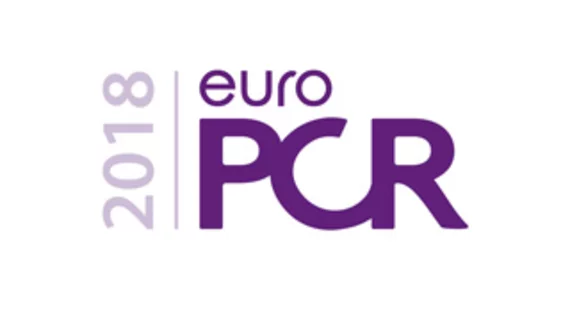Percutaneous coronary intervention (PCI) guided by fractional flow reserve (FFR) was associated with a 54 percent reduction in the composite endpoint of death, myocardial infarction and urgent revascularization when compared to medical therapy alone, according to five-year data from the FAME 2 trial presented May 22 at EuroPCR 2018 and published simultaneously in the New England Journal of Medicine.
The difference was driven largely by a reduction in urgent revascularizations (6.3 percent versus 21.1 percent), which included any unplanned hospital admission that was due to symptoms causing revascularization. By the five-year mark, 51 percent of patients in the medical therapy group had undergone revascularization.
Although this high crossover rate may have been influenced by the patients’ and clinicians’ knowledge of which treatment was received, the investigators noted they attempted to limit this bias by only including “urgent” revascularizations as part of their endpoint.
"For the first time, a study has shown that patients with stable coronary artery disease who received a stent guided by an FFR diagnostic had a benefit over medical therapy alone, including fewer heart attacks and needs for urgent revascularization," principal investigator Bernard De Bruyne, MD, PhD, said in a press release issued by Abbott, which funded the trial and manufactured the FFR tool used in the study. "Data from this study confirm the importance of FFR-guided stenting decisions combined with medical therapy over medical therapy alone."
Indeed, the heart attack rate was lower among patients receiving PCI versus those undergoing medical monotherapy (8.1 percent versus 12.0 percent), but that difference didn’t reach statistical significance. All-cause mortality rates at five years were about 5 percent for both groups.
The FAME 2 trial randomized 888 patients 1:1 to receive either PCI plus medical therapy or medical therapy alone. All patients were randomized after testing showed at least one hemodynamically significant coronary stenosis, defined as FFR of 0.80 or less. Patients with FFRs above that threshold were considered to have nonsignificant stenosis; they weren’t randomized but were instead given medical therapy and entered into a registry for follow-up.
This latter cohort of patients demonstrated a similar likelihood of meeting the primary endpoint as those with more significant stenosis who received PCI plus medical therapy, the researchers noted.
“Patients without hemodynamically significant stenoses had a favorable long-term outcome with medical therapy alone,” they wrote.
De Bruyne and coauthors said this confirms FFR measurement is an effective way to determine which patients with stable angina may benefit from revascularization.

